The Cluny Museum is the National Museum of the Middle Ages founded in 1843 by the French State. It was very close to our hotel and well worth the visit. Filled with religious art that includes stained glass from Sainte-Chapelle. It was a Roman bath (1st-3rd century)then the residence of the abbots of Cluny (15th century).
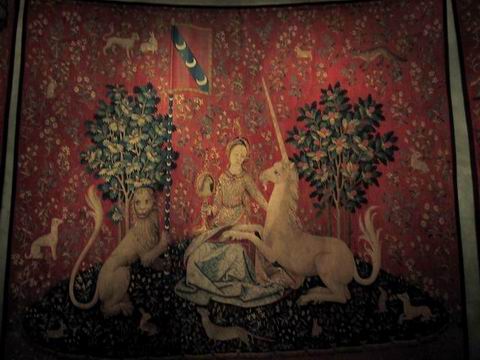
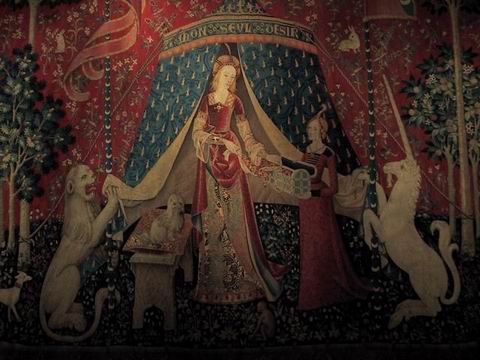
This is the finial unicorn tapestry which takes its name from the words on the tent - "To My Sole Desire". Not that there is an answer - is it material things or godly things? She seems to be either taking a necklace or putting it down. This is just prior to the Renaissance with the Dark Ages ending.

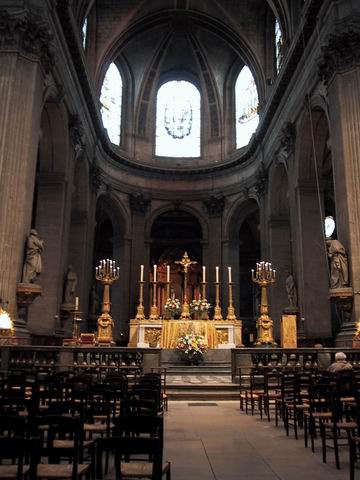
A view of the alter. The vault in the ceiling reaches 33 meters just 2 shy of Notre-Dame. The stained glass windows are hard to see in the picture because they allow so much light into the church. Using a newly discovered silver-yellow to bond the glass they were able to eliminate much of the black enamel in other church windows.
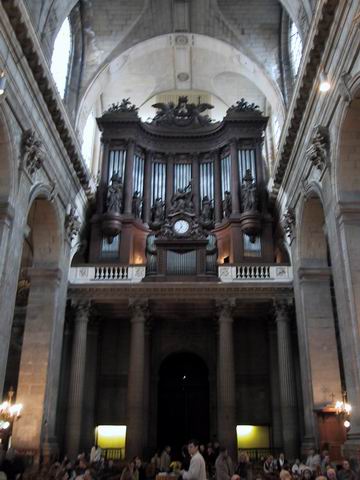
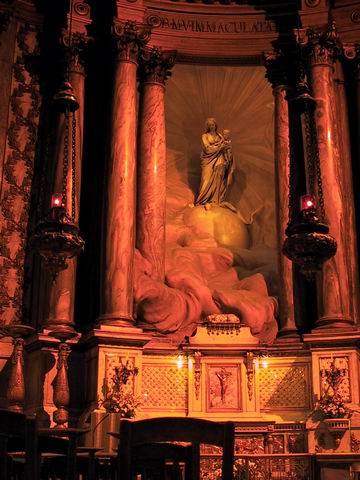
Chapel of the Blessed Virgin is impressive. In between columns brought from the ruins of the Roman city Leptis Magna (in present day Libya) is a statue in white marble of the Blessed Virgin by Jean-Baptiste Pigalle. The chapel was completed in 1774.


Virginia Ann on top of the Arc de Triomphe with the Eiffel Tower in the background.
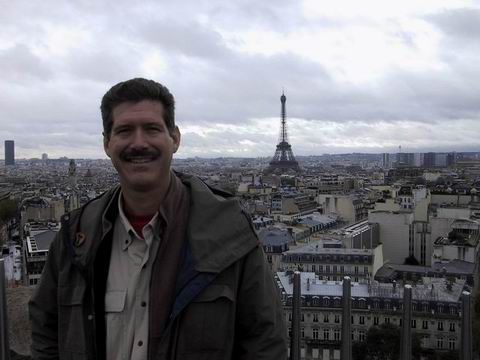
Cal on top of the Arc de Triomphe with the Eiffel Tower in the background.
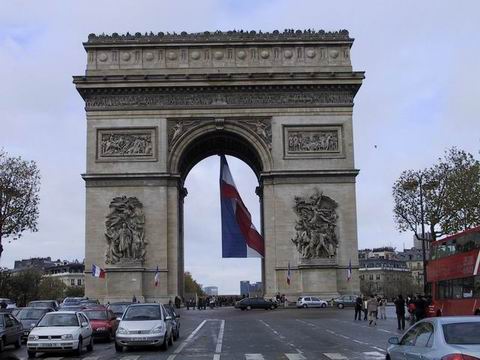
Arc de Triomphe from the Champs-Elysees. We climbed the 200+ steps to the top. From the Arc we turned toward the Louvre and strolled along the Champs-Elysees. Stopping for lunch at Laduree (another hint from Tracy Knight) where we had one of, if not the best, lunch in France. Complete with pastry desert.
After lunch we took the subway to Musee Marmottan Monet where there is the best collection of paintings by Claude Monet. Cal was in heaven. The mansion contains three floors of sketches, watercolors, chalk and oil paintings. The museum follows Monet's life chronologically. Unfortunately they do not allow cameras to enter the building!! So no pictures. Most interesting are the numerous paintings on the same subject done at different times of the day.

Once finished with Marmottan we headed back to Isle St Louis for some shopping. Then back to the Isle for dinner at La Castafiore, a great Italian restaurant. The tables were so close together the maitre' de had to move the tables to allow Cal to sit down. The best part - no smoking - a rare environment in Paris. On the way back to the hotel a picture from the bridge over to the Isle of St Louis of the Right Bank.
